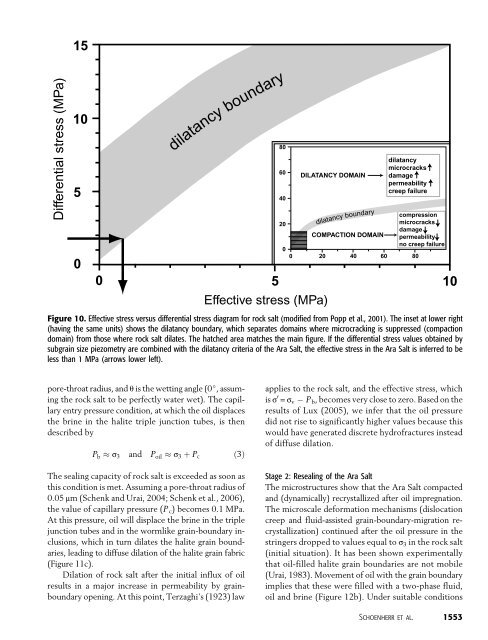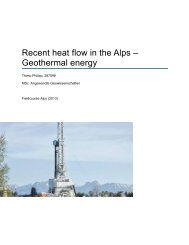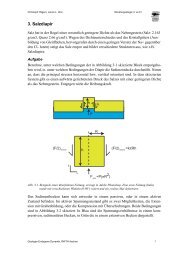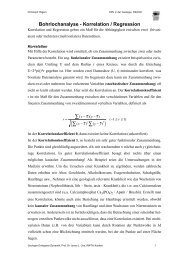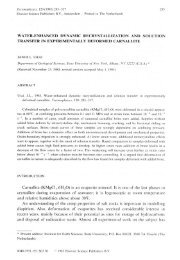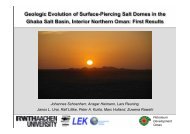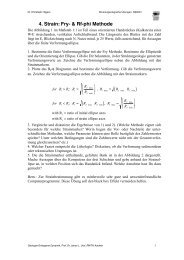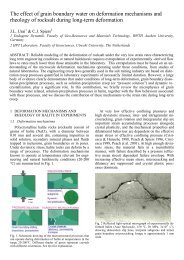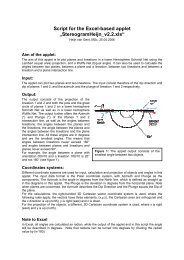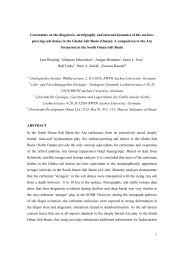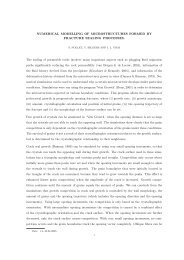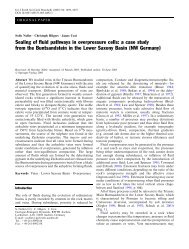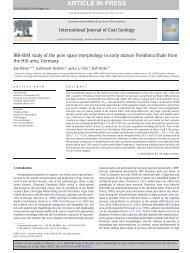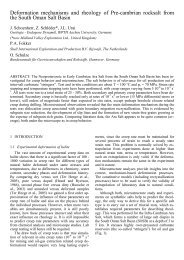Paper - RWTH Aachen University
Paper - RWTH Aachen University
Paper - RWTH Aachen University
You also want an ePaper? Increase the reach of your titles
YUMPU automatically turns print PDFs into web optimized ePapers that Google loves.
Figure 10. Effective stress versus differential stress diagram for rock salt (modified from Popp et al., 2001). The inset at lower right<br />
(having the same units) shows the dilatancy boundary, which separates domains where microcracking is suppressed (compaction<br />
domain) from those where rock salt dilates. The hatched area matches the main figure. If the differential stress values obtained by<br />
subgrain size piezometry are combined with the dilatancy criteria of the Ara Salt, the effective stress in the Ara Salt is inferred to be<br />
less than 1 MPa (arrows lower left).<br />
pore-throat radius, and u is the wetting angle (0j,assuming<br />
the rock salt to be perfectly water wet). The capillary<br />
entry pressure condition, at which the oil displaces<br />
the brine in the halite triple junction tubes, is then<br />
described by<br />
P b s3 and P oil s3 þ Pc ð3Þ<br />
The sealing capacity of rock salt is exceeded as soon as<br />
this condition is met. Assuming a pore-throat radius of<br />
0.05 mm (Schenk and Urai, 2004; Schenk et al., 2006),<br />
the value of capillary pressure (P c) becomes0.1MPa.<br />
At this pressure, oil will displace the brine in the triple<br />
junction tubes and in the wormlike grain-boundary inclusions,<br />
which in turn dilates the halite grain boundaries,<br />
leading to diffuse dilation of the halite grain fabric<br />
(Figure 11c).<br />
Dilation of rock salt after the initial influx of oil<br />
results in a major increase in permeability by grainboundary<br />
opening. At this point, Terzaghi’s (1923) law<br />
applies to the rock salt, and the effective stress, which<br />
is s 0 = sv P b, becomes very close to zero. Based on the<br />
results of Lux (2005), we infer that the oil pressure<br />
did not rise to significantly higher values because this<br />
would have generated discrete hydrofractures instead<br />
of diffuse dilation.<br />
Stage 2: Resealing of the Ara Salt<br />
The microstructures show that the Ara Salt compacted<br />
and (dynamically) recrystallized after oil impregnation.<br />
The microscale deformation mechanisms (dislocation<br />
creep and fluid-assisted grain-boundary-migration recrystallization)<br />
continued after the oil pressure in the<br />
stringers dropped to values equal to s3 in the rock salt<br />
(initial situation). It has been shown experimentally<br />
that oil-filled halite grain boundaries are not mobile<br />
(Urai, 1983). Movement of oil with the grain boundary<br />
implies that these were filled with a two-phase fluid,<br />
oil and brine (Figure 12b). Under suitable conditions<br />
Schoenherr et al. 1553


